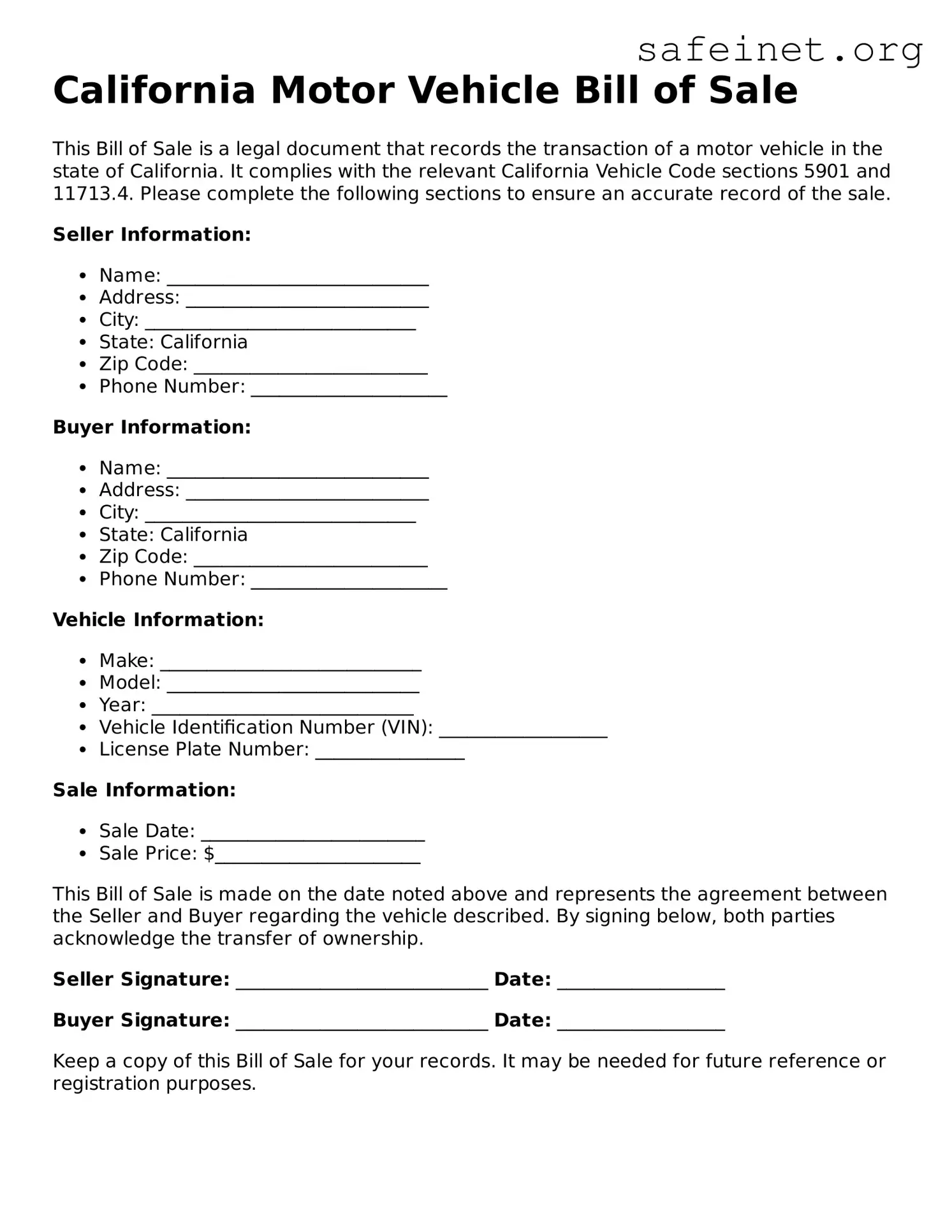The Vehicle Title is one of the most crucial documents similar to the California Motor Vehicle Bill of Sale. It serves as proof of ownership and is required for transferring the title from one party to another. While the Bill of Sale records the sale, the title specifically transfers the legal ownership of the vehicle. In California, when a vehicle changes hands, both documents are often required to complete the registration process properly.
The Odometer Disclosure Statement is another important document related to motor vehicle sales. When a vehicle is sold, federal law mandates that the seller must disclose the odometer reading at the time of sale. This statement helps prevent odometer fraud by officially recording the distance the vehicle has driven. Like the Bill of Sale, it must be signed by both the buyer and seller, ensuring transparency in the transaction.
The Notice of Transfer and Release of Liability (NRL) is important for sellers when they sell their vehicle. This document notifies the California Department of Motor Vehicles (DMV) that the seller no longer owns the vehicle and releases them from liability for any future incidents related to that vehicle. Filling out this form complements the Bill of Sale by protecting the seller after the transaction is completed.
The Vehicle Registration application is another key document tied to vehicle transactions. When a vehicle is purchased, the buyer typically needs to register the vehicle with the DMV. The Bill of Sale acts as proof of purchase, which is necessary when completing the registration application. This ensures that the vehicle is correctly documented under the new owner’s name.
The Smog Certification is also relevant to the sale of a vehicle in California. Before selling a car, sellers may need to provide proof that the vehicle has passed a smog inspection. This document instills trust in buyers and protects them from future expenses related to emissions violations. While the Bill of Sale records the sale, the Smog Certification demonstrates compliance with environmental regulations.
The Manufacturer’s Statement of Origin (MSO) is applicable for new vehicles and is issued by the manufacturer. This document establishes the vehicle's original ownership and is often required to register a new car. It acts as a foundation for the Bill of Sale when a new vehicle is sold, transitioning ownership from the manufacturer to the dealer and then from the dealer to the buyer.
An Insurance Card serves as proof that the vehicle is insured, which is essential for legal compliance in California. Buyers should always ask for the seller's current insurance information. While the Bill of Sale details the sale itself, the insurance card confirms that the vehicle can be legally driven on public roads immediately after the purchase.
A lien release document may be necessary if the vehicle was previously financed. This document confirms that the seller has paid off any outstanding loans on the vehicle, allowing the buyer to take full ownership without worries of debt. The Bill of Sale and lien release work together to ensure the buyer gains clear title to the vehicle.
The Bill of Sale for Boat or Vessel is similar when it comes to the transfer of ownership, though it pertains to watercraft. Like the Motor Vehicle Bill of Sale, this document outlines the details of the sale, including the identification of the vessel and both parties' information. Both forms secure the transaction and protect both the buyer and seller.
Finally, the Equipment Bill of Sale is relevant if the vehicle in question is classified as heavy equipment rather than a conventional motor vehicle. This document transfers ownership of the equipment and includes similar components to the standard Motor Vehicle Bill of Sale. It includes purchase details, parties involved, and acknowledgment of the sale, ensuring a clear transaction record.
